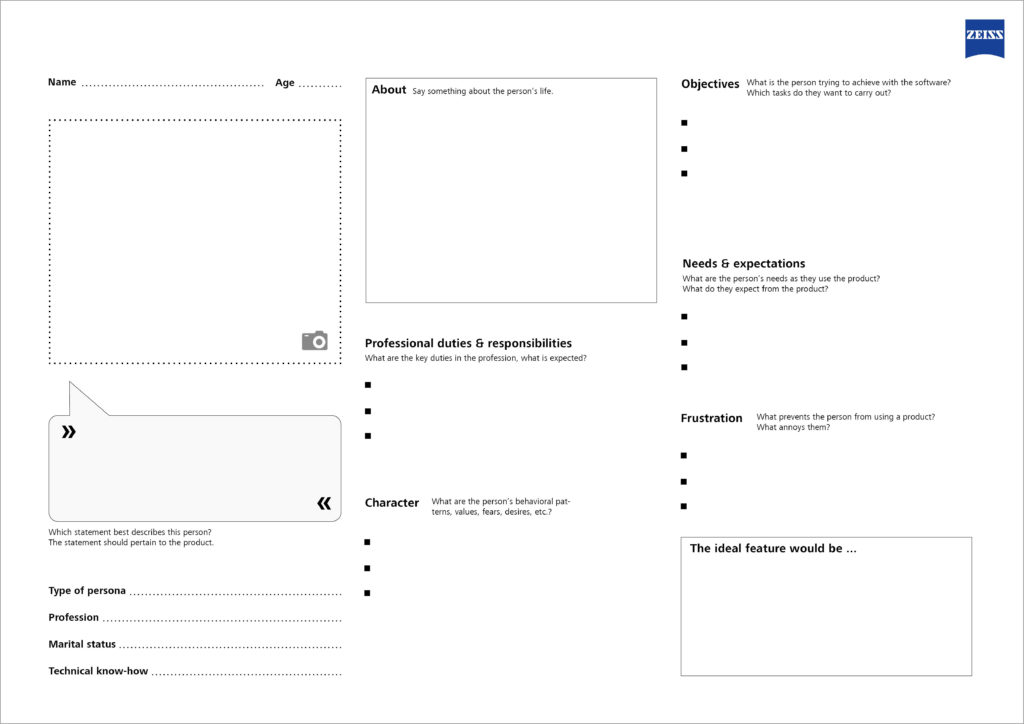Personas in a nutshell – What are personas, and why do we need them?
In the field of agile, distributed software development, and in a B2B context in particular, the client often is the only contact for the software developer. This is usually due to the end users not being available because they are either located elsewhere, separate from the development team, or do not have time. When a user is not close at hand, personas can help and compensate for the lack of contact.
Personas are prototypical users representing a user group and their essential characteristics and needs in regard to the planned product. They consolidate the results of the context analysis, but they cannot replace the user research. They are designed as posters, as “life-like” and realistic as possible because otherwise, the persona is useless. In general, personas are developed in early project stages (analysis and planning), and they are used for performance/target comparison throughout the entire development cycle. This enables the design and development team to focus on the users’ requirements. Personas serve as a reference for decisions in discussions, and by asking questions like “Would person x understand this?”, they give priority to the user. Personas help the product owner in particular to evaluate ideas for new features.
More often than not, it takes more than one persona to cover the prospective users of the software. If there are too many, possibly even contradictory, personas, it is advisable to classify them into primary and secondary personas. This helps to keep the focus on the target user group and prioritize the decision alternatives.
Which elements are needed to create a good persona?
- Name: A realistic name that identifies the persona
- Age: Allows for conclusions regarding the persona’s attitude
- Image: An image, either a photograph or a drawing, to make the persona more realistic
- Personal information: Age, gender, professional education, knowledge and skills, marital status, children, …
- Type of persona: Associated user group / archetype (e.g. teenager, housewife, pensioner)
- Profession: Function, responsibilities and duties
- Technical know-how: General computer skills; technical affinity; knowledge of related products, previous systems or competitors’ products
- Character: Individual preferences and values of the persona, e.g. are they open to new ideas?
- Behavioral patterns and approaches: Values, fears, desires and preferences
- Objectives: Key tasks to be handled with the new application
- Needs & expectations: Requirements regarding the handling of the product
- Frustration: Typical nuisances with products in general, i.e. issues that have to be avoided at all costs
Persona Template
The Usability Team at Saxonia Systems AG (since 03/2020: ZEISS Digital Innovation) has developed a template for creating a persona based on the best practices and their own experience. The template is available as a PDF free of charge: DOWNLOAD

The Persona Template allows you to customize your software even more precisely to the requirements of its prospective users, and never to lose sight of the most important aspect—because we all know: “The user is always right.”